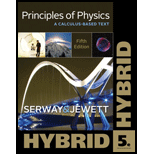
Air (a diatomic ideal gas) at 27.0°C and atmospheric pressure is drawn into a bicycle pump (Figure P17.53) that has a cylinder with an inner diameter of 2.50 cm and length 50.0 cm. The downstroke adiabatically compresses the air, which reaches a gauge pressure of 8.00 × 105 Pa before entering the tire. We wish to investigate the temperature increase of the pump. (a) What is the initial volume of the air in the pump? (b) What is the number of moles of air in the pump? (c) What is the absolute pressure of the compressed air? (d) What is the volume of the compressed air? (e) What is the temperature of the compressed air? (f) What is the increase in internal energy of the gas during the compression? What If? The pump is made of steel that is 2.00 mm thick. Assume 4.00 cm of the cylinder’s length is allowed to come to thermal equilibrium with the air. (g) What is the volume of steel in this 4.00-cm length? (h) What is the mass of steel in this 4.00-cm length? (i) Assume the pump is compressed once. After the adiabatic expansion,
Figure P17.53

(a)
The initial volume of the air in the pump.
Answer to Problem 53P
The initial volume of the air in the pump is
Explanation of Solution
Write the expression for the initial volume of the air in the pump,
Here,
Conclusion:
Substitute
Therefore, the initial volume of the air in the pump is
(b)
The number of miles of the air in the pump .
Answer to Problem 53P
The number of miles of the air in the pump is
Explanation of Solution
Write the expression for the ideal gas law,
Here,
Rewrite the above expression for
Conclusion:
Substitute
Therefore, the number of miles of the air in the pump is
(c)
The absolute pressure of the compressed air .
Answer to Problem 53P
The absolute pressure of the compressed air is
Explanation of Solution
Write the expression for the absolute pressure of the compressed air,
Here,
Conclusion:
Substitute
Therefore, the absolute pressure of the compressed air is
(d)
The volume of the compressed air .
Answer to Problem 53P
The volume of the compressed air is
Explanation of Solution
Write the expression for the adiabatic compression,
Here,
Rewrite the above expression for
Conclusion:
Substitute
Therefore, the volume of the compressed air is
(e)
The temperature of the compressed air .
Answer to Problem 53P
The temperature of the compressed air is
Explanation of Solution
Write the expression for the ideal gas law for the compressed air,
Here,
Rewrite the above equation for
Conclusion:
Substitute
Therefore, the temperature of the compressed air is
(f)
The increase in internal energy of the gas during the air compression .
Answer to Problem 53P
The increase in internal energy of the gas during the air compression is
Explanation of Solution
Write the expression for the work done on the gas,
Here,
Write the expression for the increase in internal energy of the gas,
Here,
Conclusion:
Substitute
Therefore, the increase in internal energy of the gas during the air compression is
(g)
The volume of steel in this
Answer to Problem 53P
The volume of steel in this
Explanation of Solution
Write the expression for the volume of steel,
Here,
Write the expression for the volume of the steel,
Here,
Rewrite equation (XI),
Here,
Conclusion:
Substitute
Therefore, the volume of steel in this
(h)
The mass of steel in this
Answer to Problem 53P
The mass of steel in this
Explanation of Solution
Write the expression for the mass of the steel,
Here,
Conclusion:
Substitute
Therefore, the mass of steel in this
(i)
The increase in temperature of the steel after onecompression .
Answer to Problem 53P
The increase in temperature of the steel after one compression is
Explanation of Solution
From part (f),
Write the expression for the increase in internal energy of the gas,
Here,
Rewrite the above expression,
Conclusion:
Substitute
Therefore, the increase in temperature of the steel after one compression is
Want to see more full solutions like this?
Chapter 17 Solutions
Principles of Physics
- In Figure P17.32, the change in internal energy of a gas that is taken from A to C along the blue path is +800 J. The work done on the gas along the red path ABC is 500 J. (a) How much energy must be added to the system by heat as it goes from A through B to C? (b) If the pressure at point A is five times that of point C, what is the work done on the system in going from C to D? (c) What is the energy exchanged with the surroundings by heat as the gas goes from C to A along the green path? (d) If the change in internal energy in going from point D to point A is +500 J, how much energy must be added to the system by heat as it goes from point C to point D? Figure P17.32arrow_forwardIf a gas is compressed isothermally, which of the following statements is true? (a) Energy is transferred into the gas by heat. (b) No work is done on the gas. (c) The temperature of the gas increases. (d) The internal energy of the gas remains constant. (e) None of those statements is true.arrow_forwardFigure P21.45 shows a cyclic process ABCDA for 1.00 mol of an ideal gas. The gas is initially at Pi = 1.50 105 Pa, Vi = 1.00 103 m3 (point A in Fig. P21.45). a. What is the net work done on the gas during the cycle? b. What is the net amount of energy added by heat to this gas during the cycle? FIGURE P21.45arrow_forward
- (a) Determine the work done on a gas that expands from i to f as indicated in Figure P19.16. (b) What If? How much work is done on the gas if it is compressed from f to i along the same path? Figure P19.16arrow_forwardIn Figure P19.22, the change in internal energy of a gas that is taken from A to C along the blue path is +800 J. The work done on the gas along the red path ABC is 500 J. (a) How much energy must be added to the system by heat as it goes from A through B to C? (b) If the pressure at point A is five times that of point C, what is the work done on the system in going from C to D? Figure P19.22 (c) What is the energy exchanged with the surroundings by heat as the gas goes from C to A along the green path? (d) If the change in internal energy in going from point D to point A is +500 J, how much energy must be added to the system by heat as it goes from point C to point D?arrow_forwardWhen a gas undergoes an adiabatic expansion, which of the following statements is true? (a) The temperature of the gas does not change. (b) No work is done by the gas. (c) No energy is transferred to the gas by heat. (d) The internal energy of the gas does not change. (e) The pressure increases.arrow_forward
 Principles of Physics: A Calculus-Based TextPhysicsISBN:9781133104261Author:Raymond A. Serway, John W. JewettPublisher:Cengage Learning
Principles of Physics: A Calculus-Based TextPhysicsISBN:9781133104261Author:Raymond A. Serway, John W. JewettPublisher:Cengage Learning Physics for Scientists and Engineers: Foundations...PhysicsISBN:9781133939146Author:Katz, Debora M.Publisher:Cengage Learning
Physics for Scientists and Engineers: Foundations...PhysicsISBN:9781133939146Author:Katz, Debora M.Publisher:Cengage Learning Physics for Scientists and Engineers, Technology ...PhysicsISBN:9781305116399Author:Raymond A. Serway, John W. JewettPublisher:Cengage Learning
Physics for Scientists and Engineers, Technology ...PhysicsISBN:9781305116399Author:Raymond A. Serway, John W. JewettPublisher:Cengage Learning Physics for Scientists and EngineersPhysicsISBN:9781337553278Author:Raymond A. Serway, John W. JewettPublisher:Cengage Learning
Physics for Scientists and EngineersPhysicsISBN:9781337553278Author:Raymond A. Serway, John W. JewettPublisher:Cengage Learning Physics for Scientists and Engineers with Modern ...PhysicsISBN:9781337553292Author:Raymond A. Serway, John W. JewettPublisher:Cengage Learning
Physics for Scientists and Engineers with Modern ...PhysicsISBN:9781337553292Author:Raymond A. Serway, John W. JewettPublisher:Cengage Learning




